
Edward Teach, better known as Blackbeard, was an English pirate who operated around the West Indies and the eastern coast of Britain's North American colonies. Little is known about his early life, but he may have been a sailor on privateer ships during Queen Anne's War before he settled on the Bahamian island of New Providence, a base for Captain Benjamin Hornigold, whose crew Teach joined around 1716. Hornigold placed him in command of a sloop that he had captured, and the two engaged in numerous acts of piracy. Their numbers were boosted by the addition to their fleet of two more ships, one of which was commanded by Stede Bonnet; but Hornigold retired from piracy toward the end of 1717, taking two vessels with him.

Bartholomew Roberts, born John Roberts, was a Welsh pirate and the most successful pirate of the Golden Age of Piracy, taking over 400 prizes in his career. Roberts raided ships off the Americas and the West African coast between 1719 and 1722; he is also noted for creating his own Pirate Code, and adopting an early variant of the Skull and Crossbones flag.
Captain Samuel Bellamy, later known as "Black Sam" Bellamy, was an English pirate who operated in the early 18th century. He is best known as the wealthiest pirate in recorded history, and one of the faces of the Golden Age of Piracy. Though his known career as a pirate captain lasted little more than a year, he and his crew captured at least 53 ships. Called "Black Sam" in Cape Cod folklore because he eschewed the fashionable powdered wig in favor of tying back his long black hair with a simple band, Bellamy became known for his mercy and generosity toward those he captured on his raids. This reputation earned him another nickname, the "Prince of Pirates". He likened himself to Robin Hood, with his crew calling themselves "Robin Hood's Men".
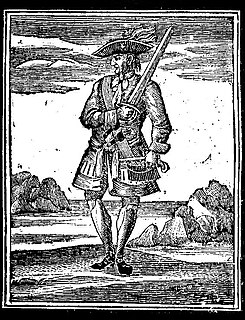
John Rackham, commonly known as Calico Jack, was an English pirate captain operating in the Bahamas and in Cuba during the early 18th century. His nickname was derived from the calico clothing that he wore, while Jack is a nickname for "John".
Captain Benjamin Hornigold (1680–1719) was an English pirate who operated during the tail end of the Golden Age of Piracy.

Stede Bonnet was an early eighteenth-century Barbadian pirate, sometimes called "The Gentleman Pirate" because he was a moderately wealthy land-owner before turning to a life of crime. Bonnet was born into a wealthy English family on the island of Barbados, and inherited the family estate after his father's death in 1694. In 1709, he married Mary Allamby, and engaged in some level of militia service. Because of marital problems, and despite his lack of sailing experience, Bonnet decided he should turn to piracy in the summer of 1717. He bought a sailing vessel, named it Revenge, and travelled with his paid crew along the Eastern Seaboard of what is now the United States, capturing other vessels and burning other Barbadian ships.
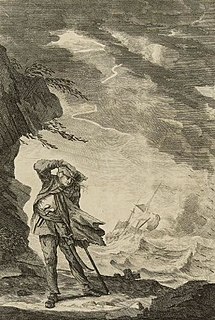
Edward "Ned" Low was a notorious pirate of English origin during the latter days of the Golden Age of Piracy, in the early 18th century. Low was born into poverty in Westminster, London and was a thief from an early age. He moved to Boston, Massachusetts as a young man. His wife died in childbirth in late 1719. Two years later, he became a pirate, operating off the coasts of New England and the Azores, and in the Caribbean.

Thomas Anstis was an early 18th-century pirate, who served under Captain Howell Davis and Captain Bartholomew Roberts, before setting up on his own account, raiding shipping on the eastern coast of the American colonies and in the Caribbean during what is often referred to as the "Golden Age of Piracy".

Charles Vane was an English pirate who operated in the Bahamas during the end of the Golden Age of Piracy.
Henry Jennings was an 18th-century English privateer from the colony of Bermuda, who served primarily during the War of the Spanish Succession and later served as leader of the pirate haven or "republic" of New Providence.
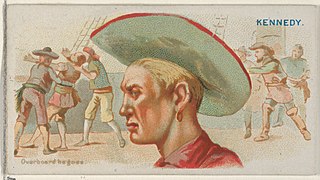
Walter Kennedy was an English pirate who served as a crew member under Howell Davis and Bartholomew Roberts.

Richard Worley was a pirate who was active in the Caribbean Sea and the east coast of the American colonies during the early 18th century.
See also 1717 in piracy, 1719 in piracy, and Timeline of piracy.
See also 1719 in piracy, 1721 in piracy and Timeline of piracy.

The Capture of the schooner Fancy was a famous British victory over two pirate ships under Captain Edward Low. When off Delaware Bay Low attacked a Royal Navy man-of-war which he mistook for a whaler. The resulting combat lasted several hours and ended with the capture of one pirate vessel. In fact, the captured vessel was not the one named Fancy - factually, the combat should have been called "Capture of the sloop Ranger."

The Capture of the sloop William refers to a small single ship action fought between John "Calico Jack" Rackham and English privateer Jonathan Barnet. The battle was fought in the vicinity of Negril, Jamaica and ended with the capture of Rackham and his crew.
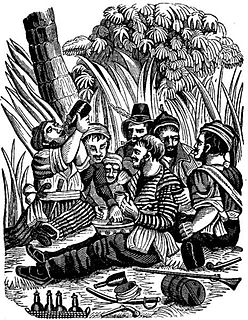
The Battle of Cape Lopez was fought in early 1722 during the Golden Age of Piracy. A Royal Navy man-of-war under Captain Chaloner Ogle defeated the pirate ship of Bartholomew Roberts off the coast of Gabon, West Africa.

John Martel was a French pirate active in the Caribbean.
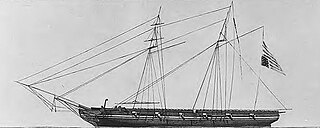
The West Indies Anti-Piracy Operations refer to the United States Navy presence in the Antilles, and surrounding waters, which fought against pirates. Between 1817 and 1825, the American West Indies Squadron constantly pursued pirates on sea and land, primarily around Cuba and Puerto Rico. After the capture of Roberto Cofresi in 1825, acts of piracy became rare and the operation was considered a success although limited occurrences went on until slightly after the start of the 20th-century.
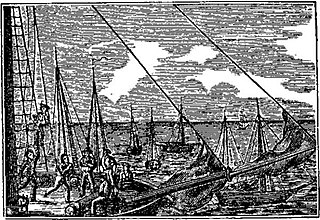
William Lewis was a pirate supposedly active in the Caribbean, off the American east coast, and the west coast of Africa. He was known for sparing his victims, and for being killed after announcing he had made a pact with the Devil. He is likely the fictional creation of Captain Charles Johnson, who presented his story among those of real historical pirates.